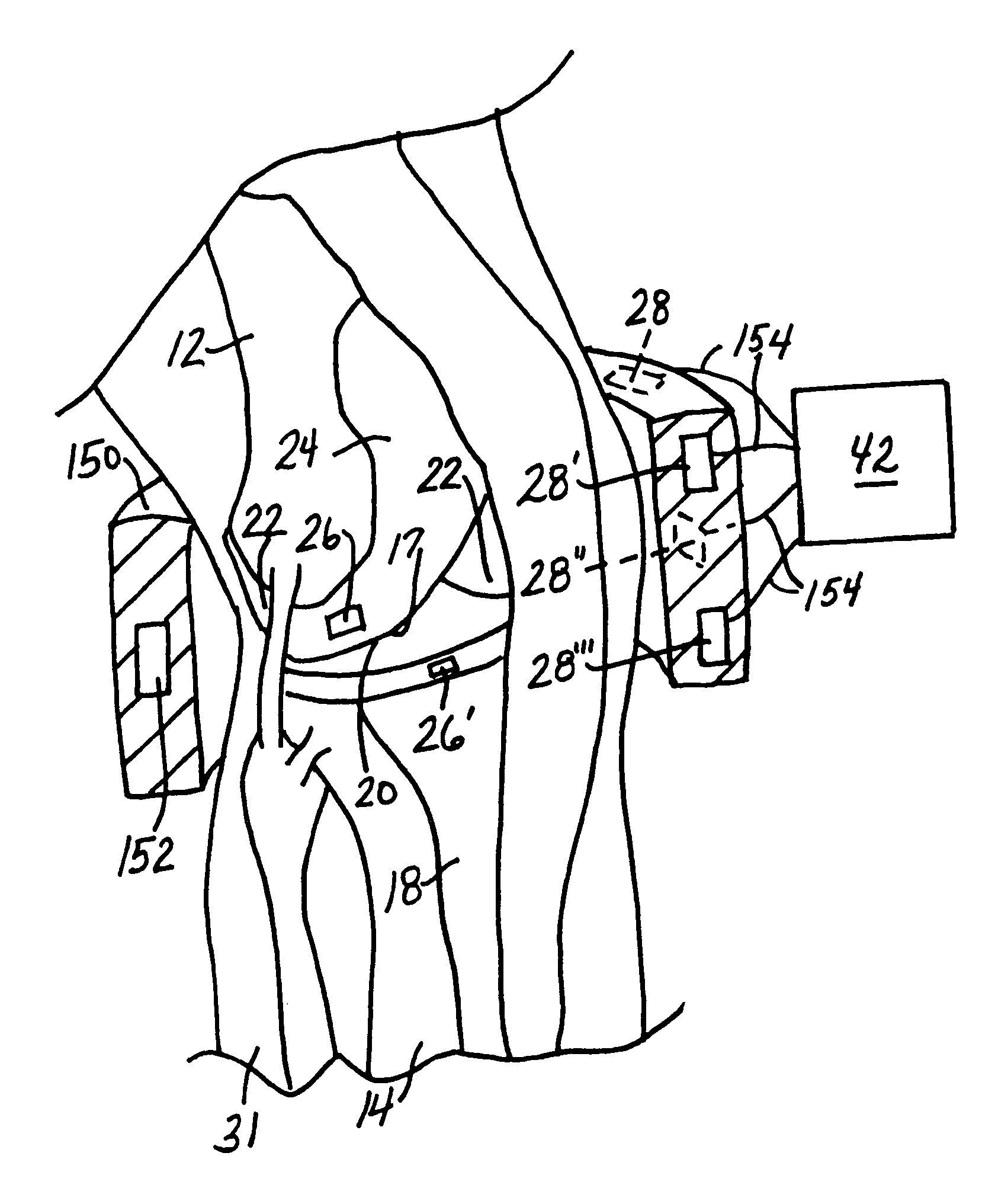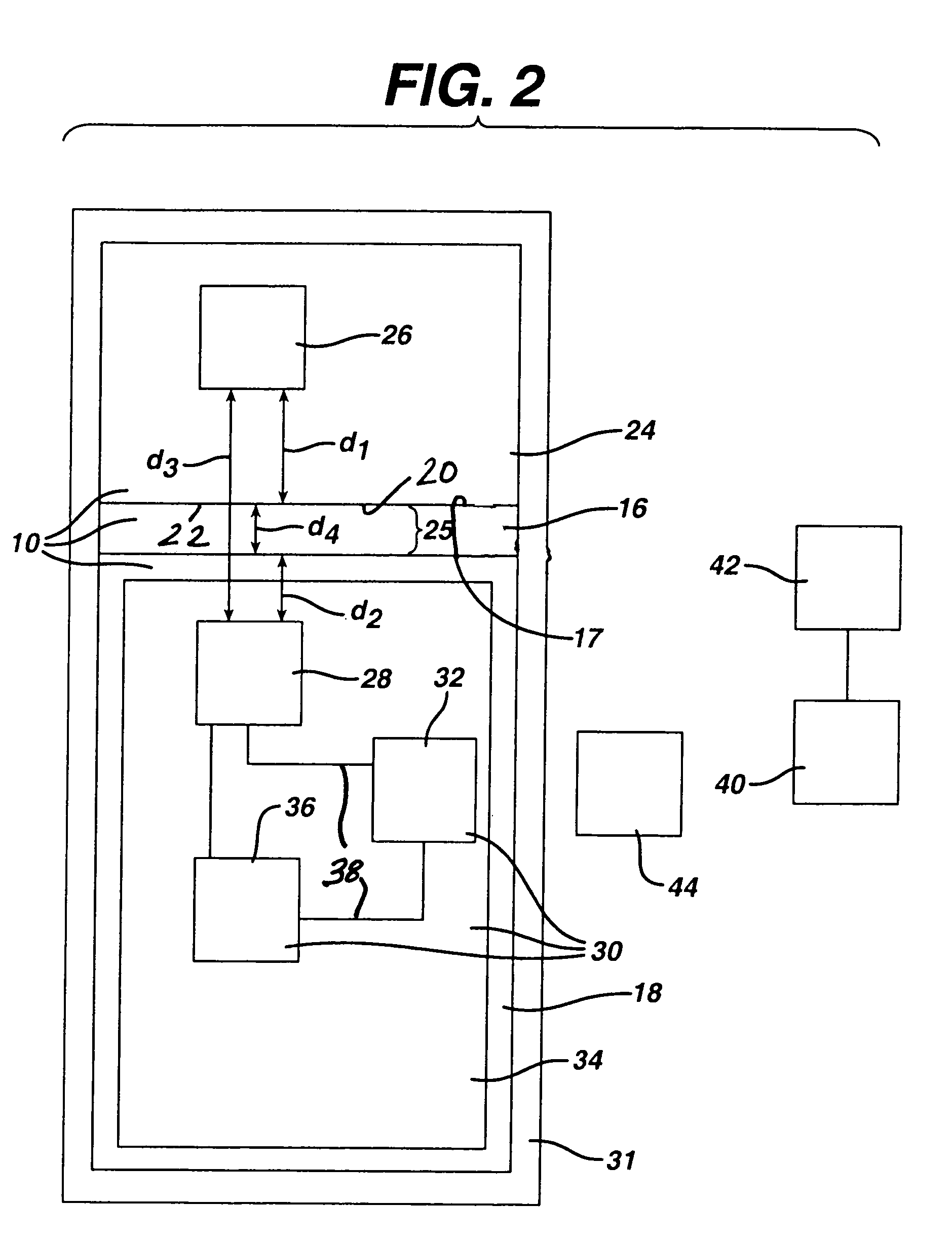In vivo joint space measurement device and method
a joint space measurement and in vivo technology, applied in the field of joint endoprosthesis systems, can solve the problems of human joints being damaged, articular cartilage covering the ends, and bearing wear problems, and achieve the effect of convenient access and accura
- Summary
- Abstract
- Description
- Claims
- Application Information
AI Technical Summary
Benefits of technology
Problems solved by technology
Method used
Image
Examples
first embodiment
[0061]FIG. 2 illustrates the principles of the present invention schematically. As shown therein, the patient's body is represented by the large box labeled 31. The magnet that serves as the signal source 26 is illustrated as a component of the distal femoral component 24. The Hall effect transducer that serves as the sensor 28 is illustrated as a component of the proximal tibial component 18. The tibial bearing 16 is shown schematically between the femoral and tibial components 24, 18.
[0062]As shown schematically in FIG. 2, the knee endoprosthesis system 10 includes implanted electronic components 30. These electronic components 30 include a power component 32, a printed circuit board 34, a modulator / transmitter 36, wiring 38 and solder (not shown).
[0063]The power component 32 can comprise an internal power source, such as a battery, or an inductive power source such as ferrite coil. A suitable ferrite coil is a small wound coil available commercially from MicroStrain, Inc. of Will...
third embodiment
[0079]a prototype knee endoprosthesis system is illustrated in FIG. 15. As in the embodiments of FIGS. 1, 8 and 10, the prototype knee endoprosthesis system of the embodiment of FIG. 15 includes a distal femoral component 24A, proximal tibial component 18A and bearing component 16A, although in this embodiment, the proximal tibial component 18A and bearing component 16A have some different features, as described in more detail below.
[0080]As in the embodiments of FIGS. 1 and 8, in the embodiment of FIG. 15 the distance reference 28 comprises a Hall effect transducer and the signal source 26 comprises a magnet. The Hall effect transducer (distance reference 28) in the embodiment of FIGS. 15 and 16 is carried on a circuit board 34 on the proximal surface 29 of the tibial tray 18A, and fits within a recess 33 in the distal surface of the tibial bearing 16A, although it should be understood that this embodiment is a prototype and that in a final embodiment these components could be carr...
PUM
 Login to View More
Login to View More Abstract
Description
Claims
Application Information
 Login to View More
Login to View More - R&D
- Intellectual Property
- Life Sciences
- Materials
- Tech Scout
- Unparalleled Data Quality
- Higher Quality Content
- 60% Fewer Hallucinations
Browse by: Latest US Patents, China's latest patents, Technical Efficacy Thesaurus, Application Domain, Technology Topic, Popular Technical Reports.
© 2025 PatSnap. All rights reserved.Legal|Privacy policy|Modern Slavery Act Transparency Statement|Sitemap|About US| Contact US: help@patsnap.com



